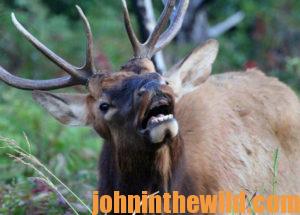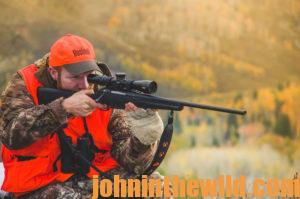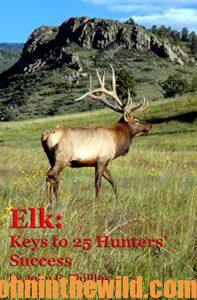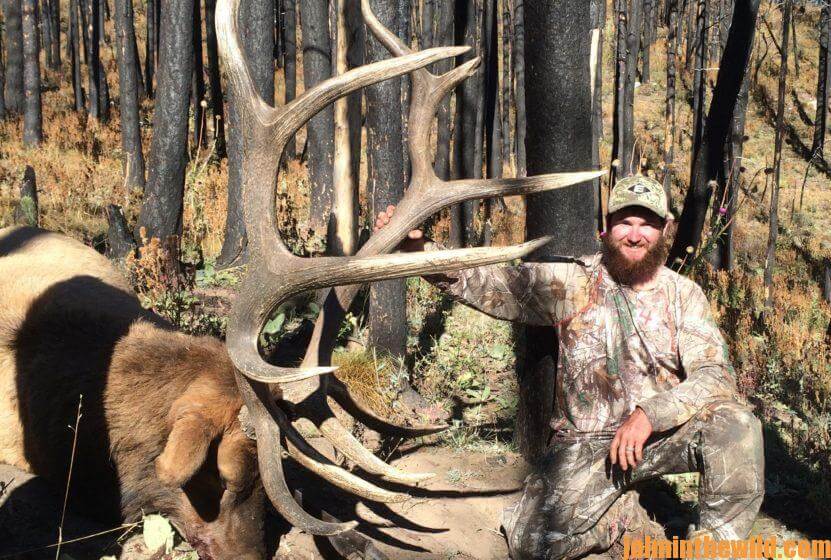Editor’s Note: Ryan Solomon, who lives outside of Aguilar, Colorado, is a guide for Fulldraw Outfitters (https://www.colorado.com/hunting/fulldraw-outfitters). Solomon hunts private and public lands and guides for antelope, mule deer, whitetail, elk, mountain lions, bears and turkeys. Solomon is 33-years old and has been guiding for 16 years. In southeast Georgia, Solomon’s family owns the 9,500-acre hunting planation, Gopher Plantation (http://www.gopherplantation.com/), where he guides there for deer, whitetails, hogs and quail.
Several years ago, I met Fred Eichler who’s originally from Gainesville, Florida. When I returned home, I decided I didn’t want to farm anymore. Today my wife remembers me talking about Fred  Eichler and the opportunity I had to guide in Colorado. I originally called Fred and went to Colorado, planning on staying for just two months. However, I ran a video camera for Fred and stayed five months. This fall will make my 7th year to guide for Fulldraw Outfitters. Eventually, even my wife started to come out to Colorado with me in the fall and became the camp cook.
Eichler and the opportunity I had to guide in Colorado. I originally called Fred and went to Colorado, planning on staying for just two months. However, I ran a video camera for Fred and stayed five months. This fall will make my 7th year to guide for Fulldraw Outfitters. Eventually, even my wife started to come out to Colorado with me in the fall and became the camp cook.
One of most-memorable hunts was the Growler elk that I estimated would score 360-inches, except he had about 10 inches of his horns broken off. I remember this hunt starting on the very- last day of archery season on public lands. I’m often asked, “What’s the most-difficult problem you have with bowhunters who come to elk camp to take a bull?” Many of our bowhunters are from the East and are accustomed to aiming close to the shoulder blades of whitetails before they release their arrows. Since this is the place they also most often aim when trying to take an elk, I have to show our bowhunters a diagram of where the elk’s vitals actually are. I ask them to shoot further back on an elk than they will on a whitetail. If they don’t, there’s a good chance that they’ll hit the elk’s shoulder. The shoulder blade on an elk is much larger and thicker than the shoulder blade on a whitetail. The two most-common reasons that a bowhunter doesn’t get his elk is because he shoots too high and over the elk’s back, or instinctively shoots a little bit behind the elk’s shoulder and hits the shoulder blade.
Fulldraw Outfitters hunts some private lands that adjoin a national forest, so no one can get access into this area without having permission from the private landowner. Over the years we’ve found that many of the bulls on the public lands will remain in this region, which is somewhat remote. On this last day of bowhunting public lands, we found a herd of elk that had eight bugling bulls. I spotted this bull that we later named the Growler that would score about 320 inches. While I watched the herd, I noticed that this dominant bull – the herd bull – had a very-distinct and different bugle. He would growl before he bugled. I thought of it as more of a roar when he did bugle. I was hunting with Jeb Eichler, Fred and Michelle Eichler’s 24-year-old son, but we couldn’t get the Growler within 40 yards.
The next day was the opening of rifle season, and I got back on the same herd on the same mountain with another guide, Zach Workman, and two clients. In the first hour, Zach’s client took a 5×5 bull, and my client and I went after the biggest bull. There was a meadow about 1/4- mile away from our access point, and a small creek that ran to the south side of the meadow with only ankle-deep water in it. We walked up that creek because the wind was blowing our human odor down it. At the head of the creek was a saddle in the mountain, and we could hear the bull bugling on the other side of the mountain from me and my client. I could tell it was the herd bull because we had nicknamed him the Growler.
 Before we reached the saddle, we spooked a small satellite bull. I immediately started cow calling soft moos with a custom antler call that a guy in New Mexico made for me. If the big bull on the other side of the mountain could hear the satellite bull running off that we had spooked, then the cow calling and the soft mooing would make the big bull assume a herd of elk was on our side of the mountain. Once the bull acknowledged our calls, he growled out a bugle. He broke out on top of the mountain about 30 yards from us, and I gave him lost calls to make him think that the cows in the herd had scattered a little after the satellite bulls spooked. At that point, my hunter didn’t have a shot, and I was standing right over my hunter’s shoulder.
Before we reached the saddle, we spooked a small satellite bull. I immediately started cow calling soft moos with a custom antler call that a guy in New Mexico made for me. If the big bull on the other side of the mountain could hear the satellite bull running off that we had spooked, then the cow calling and the soft mooing would make the big bull assume a herd of elk was on our side of the mountain. Once the bull acknowledged our calls, he growled out a bugle. He broke out on top of the mountain about 30 yards from us, and I gave him lost calls to make him think that the cows in the herd had scattered a little after the satellite bulls spooked. At that point, my hunter didn’t have a shot, and I was standing right over my hunter’s shoulder.
The Growler went 10-more yards away from us and bugled. Then I gave a light, lost call and whispered to my hunter, “Whenever you see that bull’s shoulder in the next hole in the cover, thump him.” The bull was coming toward and quartering to us, when my hunter squeezed the trigger on his .260. Once the bull elk took the bullet, he ran about 30 yards and then fell over dead. The good news was we were only 600 yards from where we’d left our truck. The bad news was the 600 yards was all uphill. So, I went up to the truck and drove it down the mountain to where the creek crossed the road, and then Zach and I packed the meat and the head out, while walking downhill, instead of having to pack it up the mountain.
bugled. Then I gave a light, lost call and whispered to my hunter, “Whenever you see that bull’s shoulder in the next hole in the cover, thump him.” The bull was coming toward and quartering to us, when my hunter squeezed the trigger on his .260. Once the bull elk took the bullet, he ran about 30 yards and then fell over dead. The good news was we were only 600 yards from where we’d left our truck. The bad news was the 600 yards was all uphill. So, I went up to the truck and drove it down the mountain to where the creek crossed the road, and then Zach and I packed the meat and the head out, while walking downhill, instead of having to pack it up the mountain.
To learn more about hunting elk, check out John E. Phillips’ book, “Elk: Keys to 25 Hunters’ Success,” available in Kindle, print and Audible at http s://amzn.to/2IDszQk.
Tomorrow: The New Mexico Gila Wilderness Bowhunt Bull Elk with Ryan Solomon










